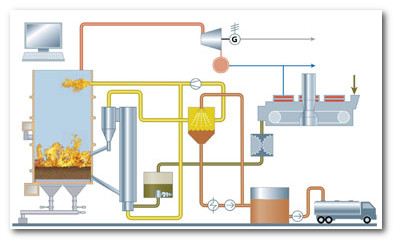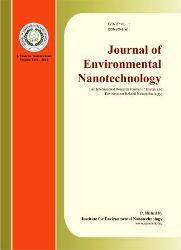
Carbon nanofibers have attracted the tremendous attention because of their potential applications in the field of science and technology. The CNFs can be used in hydrogen storage materials (Park et al., 1999), field emission devices, sensors, fuel cells and super capacitors (Dai et al., 2002). CNFs are chemically stable for corrosive attack in acidic and basic environment. Therefore, extensive efforts have been made to develop CNFs by different methods using different metal catalyst (Fe, Co, Ni, Cu, etc) and different carbon feed stock. However, most of the work done with zero valence iron compounds, such as Fe(C5H5)2 or Fe(CO)5 in order to favor and control the catalyst particle size (Hoque et al., 2001) to grow selective nanofiber. To date, various petroleum by products, such as methane (Benissad- Aissani et al., 2004), xylene (Martin-Gullon et al., 2006), benzene (Endo et al., 2001) etc., are in practice to synthesize CNFs. However, in view of foreseen crisis of fossil fuels in the near future, it is desirable to look for alternative carbon feedstock to synthesize various kinds of nanomaterials. However, these are few reports on the synthesis of CNFs from natural precursor, such as turpentine oil (Ghosh et al.,2008), camphor (Pradhan et al., 2003) etc. Disposal of waste scrap tire is a major environmental and economical issue (Cunliffe et al., 1998). Tires have been recycled as grinding, crumbing, re-treading, reclaiming, combustion and pyrolysis (Kaminsky and Mannerich, 2001). Pyrolysis offers an environmentally attractive method to decompose wide varity of wastes, including scrape tires (Karthikeyan et al., 2012). Tire pyrolysis yield: solid char, 30-40; liquid residue, 40-60; and gases, 5-20 wt%. Solid carbon residue may be used as reinforcement in rubber industry or fuel. Gaseous fraction can be used as fuel in pyrolysis process. Tire pyrolysis oil fraction can be used as alternative fuel. A detailed study of the growth of structure carbon nanofiber from tire pyrolysis oil has not to the best of our knowledge, been published.
In order to overcome those problems, we investigated to grow carbon nanofiber on quartz substrates by spray pyrolysis of inexpensive precursor tire pyrolysis oil. Designing of catalyst material and optimization of reaction parameters , which is suitable for specific morphological one dimensional carbon nano structures from tire pyrolysis oil is one of the future prospects in this area of research.
Published Articles C.Sathiskumar , S. Karthikeyan, Synthesis of One Dimensional Carbon Nanofibers from Tire Pyrolysis Oil , J. Environ. Nanotechnol. Vol1(1),pp 46-49, 2012



